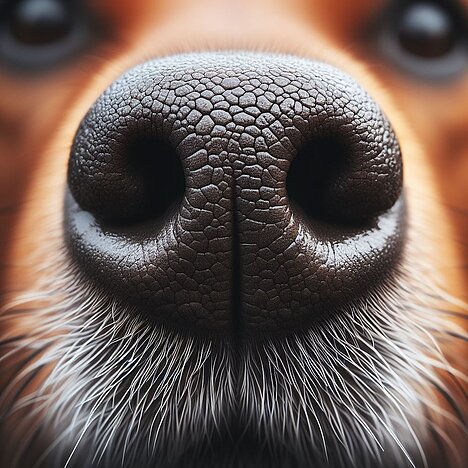Shortness of breath

Difficulty breathing is a serious symptom that can indicate a variety of illnesses. If your dog is breathing heavily, you should act quickly to find the cause and help him. In this article, you will learn how to recognize respiratory distress in dogs, what the possible causes are and how you can give your dog first aid.
How do you recognize respiratory distress in dogs?
Respiratory distress or dyspnea is a condition in which the dog is not getting enough oxygen. This can manifest itself in various signs, such as
- panting
- coughing
- panting
- Blue tongue or mucous membranes
- Shallow or rapid breathing
- Strained or noisy breathing
- Changed posture (e.g. head stretched forward or sitting upright)
- Restlessness or anxiety
If you notice one or more of these symptoms in your dog, you should take him to the vet or call an emergency service immediately. Respiratory distress can be life-threatening and require rapid treatment.
What are the possible causes of respiratory distress in dogs?
Respiratory distress in dogs can have many different causes, affecting either the airways, the lungs or the heart. Some of the most common are:
- Foreign bodies in the airways (e.g. bones, toys, grass)
- Allergic reactions (e.g. to insect bites, medication, food)
- Infections (e.g. kennel cough, pneumonia, heartworm disease)
- Injuries (e.g. broken ribs, bruised lungs, bleeding)
- Tumors (e.g. in the nose, throat, lungs)
- Heart problems (e.g. heart failure, heart defects, cardiac arrhythmia)
- Fluid accumulation in the lungs or chest (e.g. due to heart, liver or kidney disease)
- Poisoning (e.g. from chocolate, rat poison, medication)
Only a vet can determine the exact cause of the shortness of breath by examining your dog and carrying out further tests if necessary.
How can you give first aid to a dog in respiratory distress?
If your dog is having difficulty breathing, you should follow these steps:
- Keep calm and try to reassure your dog.
- Check his mouth and throat for foreign objects and remove them carefully if possible.
- Open a window or turn on a fan to provide fresh air.
- Lay your dog on a soft surface and make sure his head is slightly higher than his body.
- Avoid squeezing or petting your dog, as this could make it difficult for him to breathe.
- Do not give your dog water or food, as he may choke on it.
- Take your dog to the vet or call emergency services as soon as possible.
Respiratory distress in dogs is a serious symptom that should not be ignored. If you know how to recognize it and what you can do, you can help your dog in an emergency and save his life.
The authors assume that a veterinarian should be consulted if an animal is ill and that medication should only be taken after consultation with a doctor or pharmacist. Only an individual examination can lead to a diagnosis and treatment decision.
We help you find the nearest vet → This way